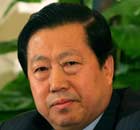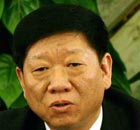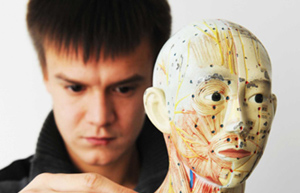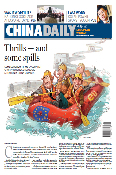NDRC: Energy-saving targets within sight
Updated: 2010-11-25 09:29
By Liu Yiyu (China Daily)
|
 |
|
Visitors at the China International Green Industry Expo 2010 in Beijing. [Photo / China Daily] |
Consumption per unit of GDP declines 3% in the first three quarters of year
BEIJING - China's energy consumption per unit of GDP fell 3 percent in the first three quarters year-on-year and the nation is likely to achieve the energy-saving targets of the 11th Five-Year Plan (2006-2010) by the end of this year, the National Development and Reform Commission (NDRC) said on Wednesday.
The country's energy consumption per unit of GDP decreased 15.61 percent during the first four years of the 11th Five-Year Plan period, while the amount of energy saved has reached 490 million tons of coal equivalent and carbon dioxide emissions fell 1.13 billion tons during the same period, said Xie Zhenhua, vice-chairman of the NDRC.
Meanwhile, in the clean energy sector, China's installed capacity in hydropower and wind power is expected to reach 210 million kW and 40 million kW respectively by the end of this year, said Xie.
He said that stricter measures to save energy and cut emissions would be included in the 12th Five-Year Plan (2011-2015).
These will include making energy saving a compulsory target, establishing carbon trading markets and green taxes.
Xie made the remarks at the China International Green Industry Forum, the first national level event of its kind, one week ahead of the United Nations Cancun Conference in Mexico.
However, to meet the goal of developing a green economy, China faces many challenges.
Currently, industrial production accounts for 84.3 percent of sulfur dioxide emissions and 34.4 percent of chemical oxygen demand, accounting for 71.3 percent of China's overall energy consumption, according to data from the Ministry of Industry and Information Technology.
"High energy consumption, together with heavy pollution, will pose a severe hurdle for the country's future industrial development," said Miao Wei, vice-minister of industry and information technology.
To meet its target of cutting carbon dioxide emissions by 40 percent to 45 percent by 2020, China will have to reduce its energy consumption for industrial production by 85 million tons of coal equivalent, he added.
During the 12th Five-Year Plan, the country will focus on fostering modern industry, particularly new and high technology, Miao said.
He said the government will offer the industrial sector more guidance in technological innovation and provide more support for service sectors, including logistics, software and the creative and cultural industries.
In addition to new and rising industries, the country will also concentrate on the transformation and upgrading of its traditional industries, Miao added.
"The traditional industries are the pillar and foundation of China's industry, which shall never be left out of the plan," Miao said.
During the past five years, China's industrial-added value has increased 13.5 percent year-on-year and is expected to exceed 15 trillion yuan ($2.26 trillion) by the end of 2010, said the ministry.
Moreover, by the end of 2010, energy consumption per unit of industrial-added value is expected to drop 25 percent in comparison with 2005, equivalent to saving of 650 million tons of standard coal, according to official figures.
Zhou Siyu contributed to this story.
Paper's Digest

China bags Asiad team tennis title after 24 yrs
Wimbledon semifinalist Li Na led host China to capture the team tennis title on Tuesday at the Asian Games, accomplishing her Asiad tour with three consecutive victories.
China rate rises no panacea to curb inflation: PBOC adviser
Specials

Safeguarding environment a priority
China continues to face mounting pressure to curb environmental degradation, despite progress in reducing pollution over the last five years, the environmental protection minister warned.

Employment to remain a continuing challenge
China's top labor official said the country will face a tough employment situation in the next five years.

Russian possessed with TCM
Born into a family of doctors, Maxime became interested in Traditional Chinese Medicine (TCM) at the age of 12, after hearing about TCM theories such as health preservation and recuperation.
